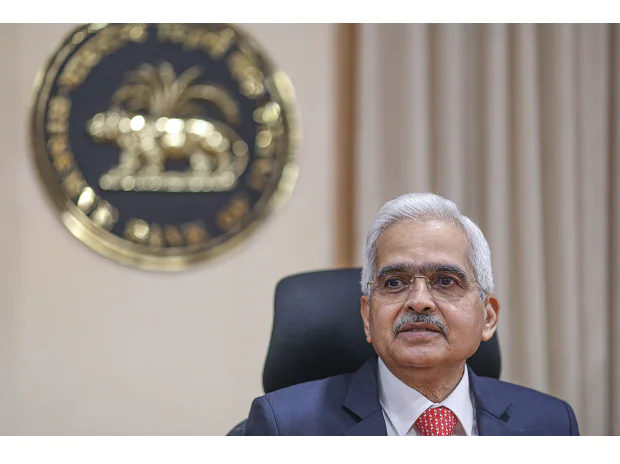[ad_1]
At a time when surplus liquidity in the banking system has shrunk considerably, banks can augment systemic liquidity by drawing down on excess cash reserve ratio and statutory liquidity ratio, Reserve Bank of India Governor Shaktikanta Das said on Friday.
From around Rs 8 trillion in early April, the liquidity surplus in the banking system has shrunk to around Rs 1 trillion in September, with the system even slipping into deficit during advance tax outflows earlier this month.
The fall in the liquidity surplus is owing to multiple factors, including the RBI’s interventions in the foreign exchange market and a sharp pick-up in bank credit growth, which is currently at nine-year highs.
The shrinking liquidity surplus has led to the interbank call money rate rising to three-year highs since last week, with the weighted average call rate now above the repo rate. The weighted average call rate is the RBI’s monetary policy anchor.
Aligning to the RBI’s new repo rate of 5.90 per cent, the weighted average call rate on Friday, closed at 5.98 per cent. The RBI hiked the repo rate by 50 bps on Friday.
“This temporary moderation of surplus liquidity needs to be seen in the context of the large potential liquidity in the system arising from the expected pick-up in government spending that usually happens in the second half of the year,” Das said while detailing the Monetary Policy Committee’s statement on Friday.
“Furthermore, drawdown of excess cash reserve ratio (CRR) and excess statutory liquidity ratio (SLR) holdings of banks can also augment system liquidity,” he said.
Cash reserve ratio (CRR) refers to funds that banks are mandated to park with the RBI. The ratio is currently at 4.50 per cent.
Statutory liquidity ratio (SLR) refers to the portion of their deposits that banks must mandatorily park in highly liquid assets and is primarily comprised of government bonds. The ratio is currently at 18 per cent.
With the RBI having embarked on a prolonged monetary easing cycle in the aftermath of the COVID crisis in March 2020, banks had stocked up on government bonds well beyond the regulatory requirement. Treasury officials said that at present the excess SLR in the banking system was around 9 per cent of deposits.
“There is also excess SLR by banks. When we look at the CD ratio, it has not gone up much. The incremental CD ratio is being met by the banks through various sources, including raising commercial deposits as well as bulk deposits,” RBI Deputy Governor M.K. Jain said on Friday.
The combination of the shrinking liquidity surplus and the need for banks to mobilise funds for loan growth, however, could eat into demand for government bonds, market players said.
“We can see the weak response in government bond auction cut-offs and I think the market will adjust to higher yields from here. As of now, the RBI has no elbow room when it comes to liquidity because the currency is in focus,” ICICI Securities Primary Dealership head of trading Naveen Singh said.
“One thing which was in a way supporting the market was bond index inclusion but that hasn’t happened. Investor appetite gradually may wane. We could see demand dwindling a bit. By December-end we could be close to 7.70 per cent,” he said. Yield on the 10-year government bond settled at 7.39 per cent on Friday.
[ad_2]
Source link



